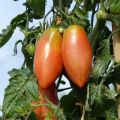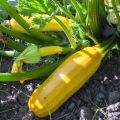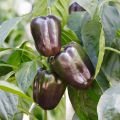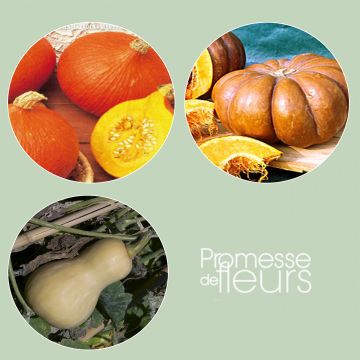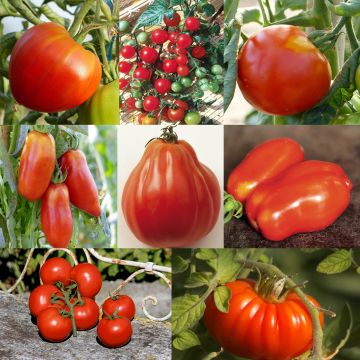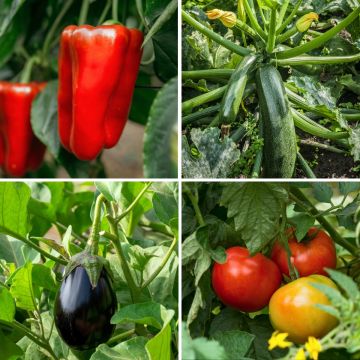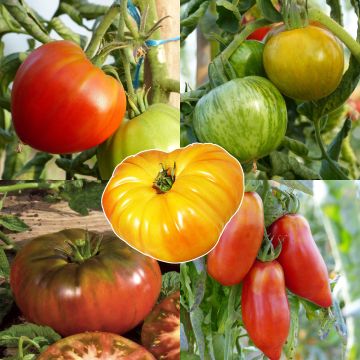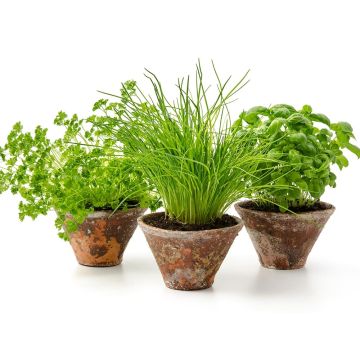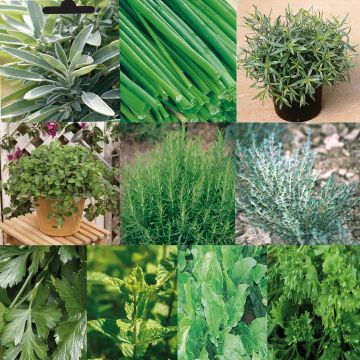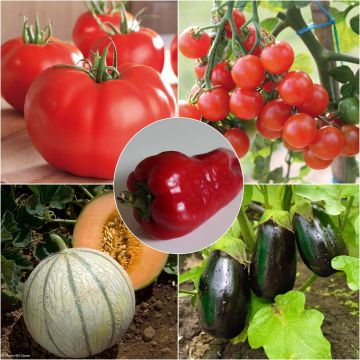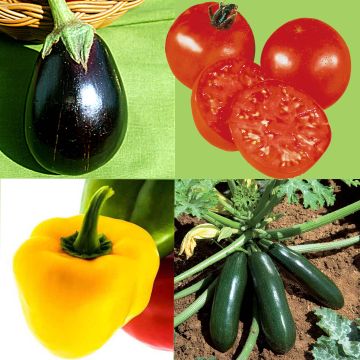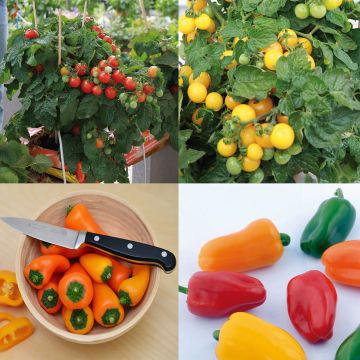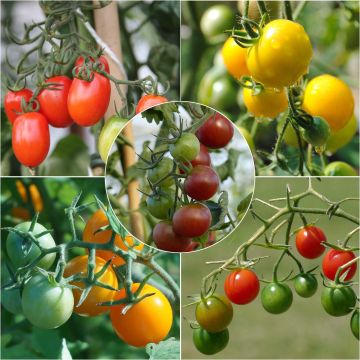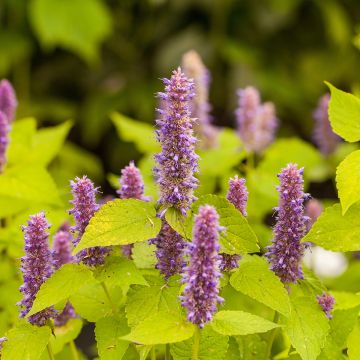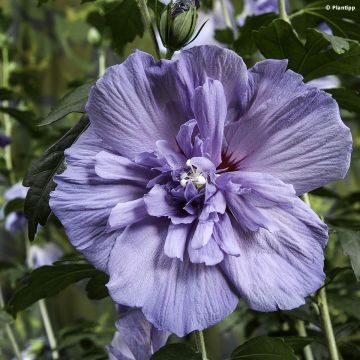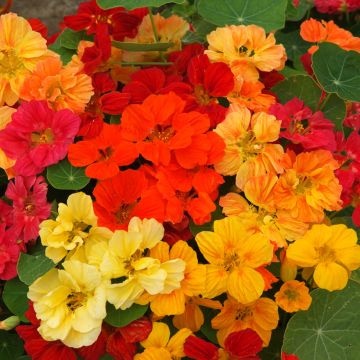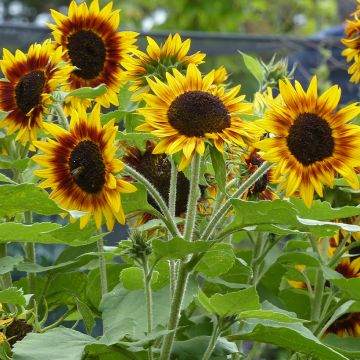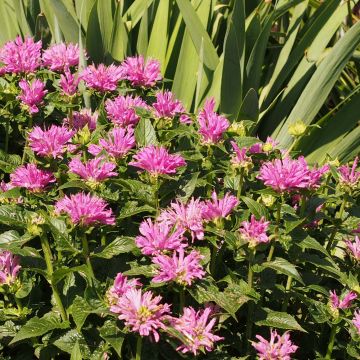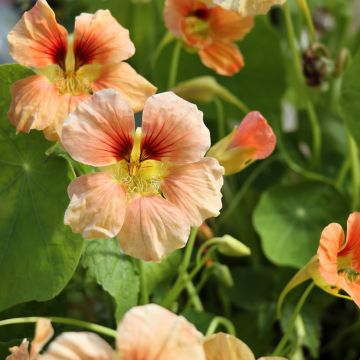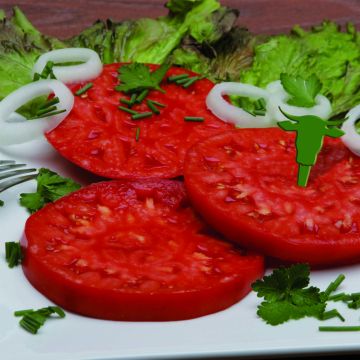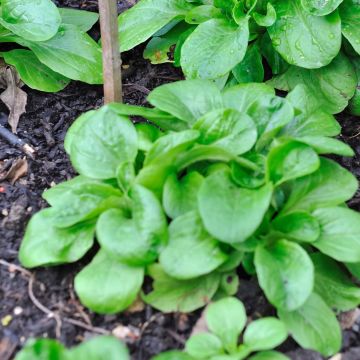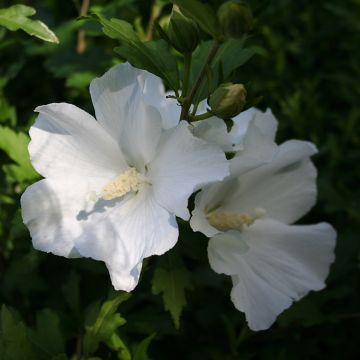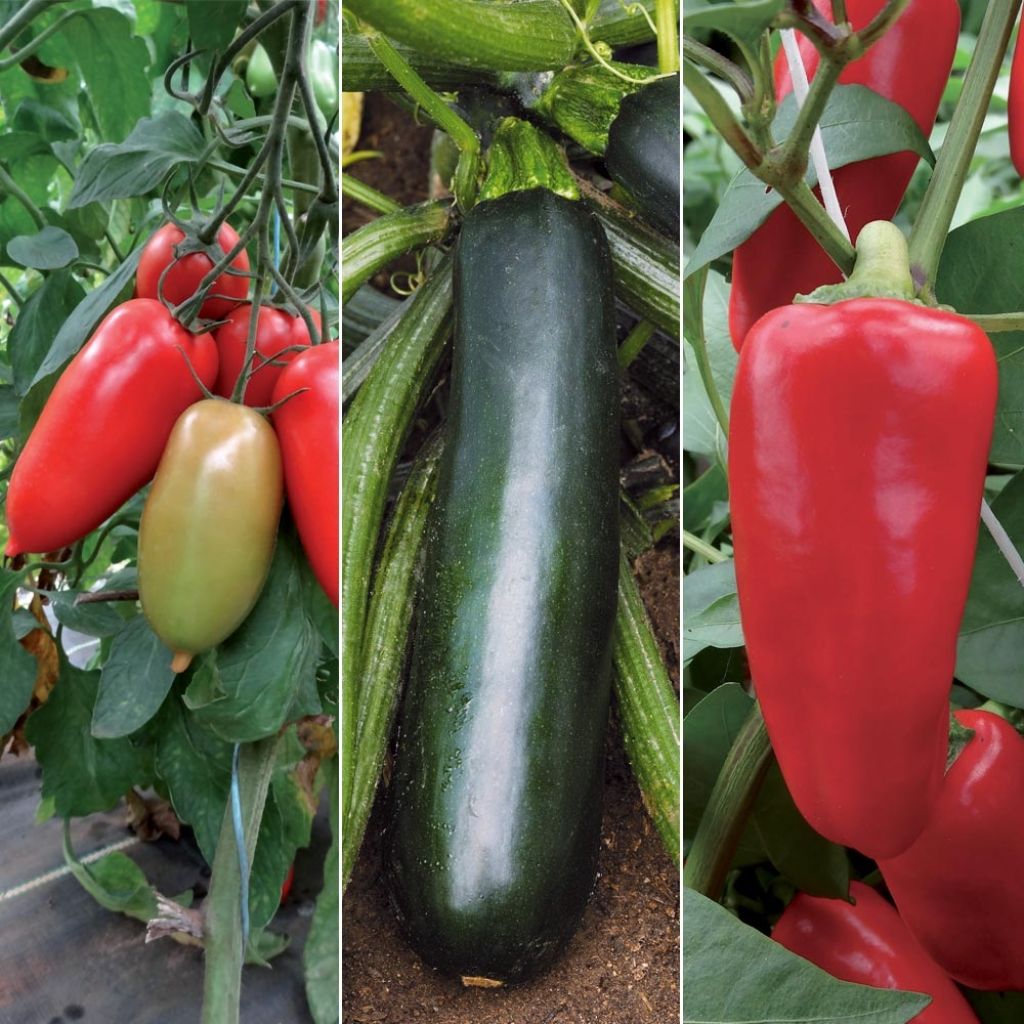

Productive terrace trio with tomato, courgette, and pepper
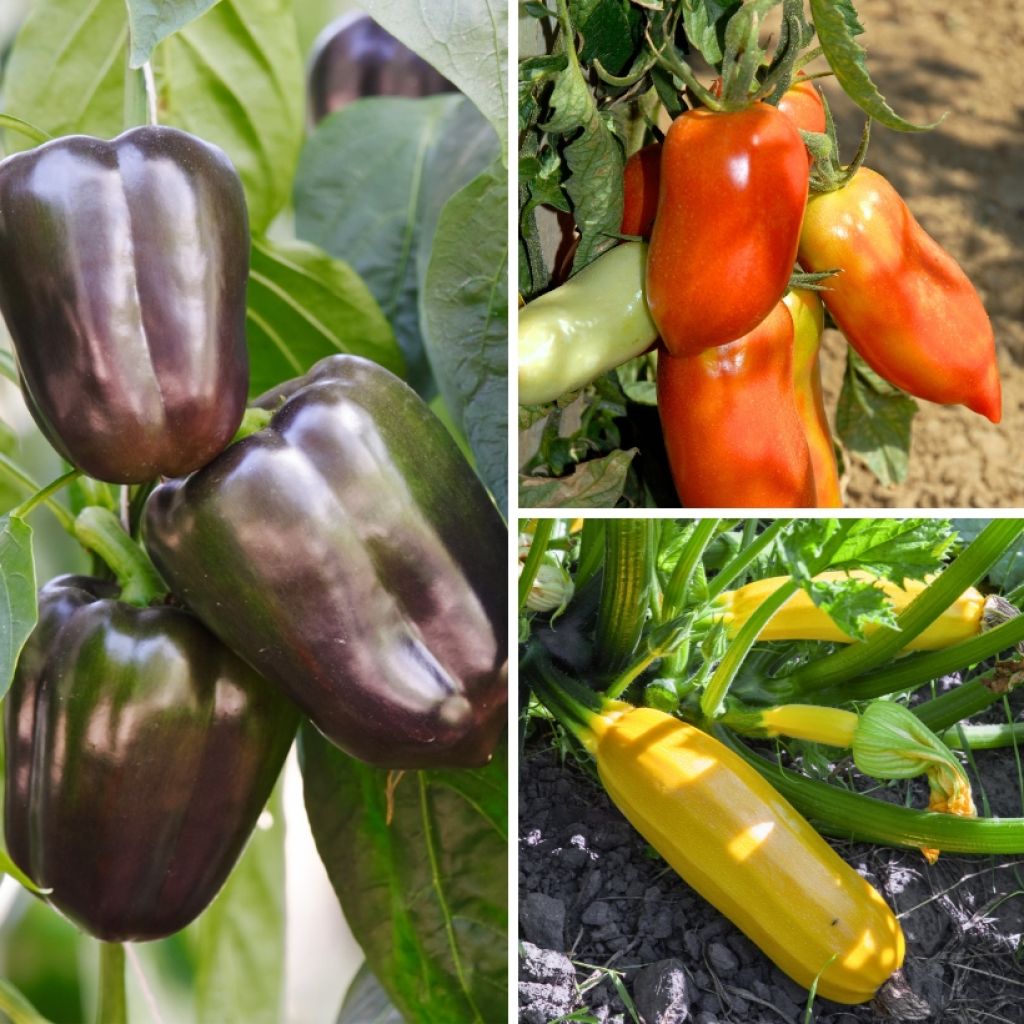

Productive terrace trio with tomato, courgette, and pepper
Productive terrace trio with tomato, courgette, and pepper
Tomate Cornabel F1 greffée, Courgette Easy Pick Gold F1, Poivron Bellania F1 Bio
This item cannot be shipped to the selected country
Delivery charge from €5.90
More information
Schedule delivery date,
and select date in basket
This plant carries a 6 months recovery warranty
More information
We guarantee the quality of our plants for a full growing cycle, and will replace at our expense any plant that fails to recover under normal climatic and planting conditions.
From €5.90 for pickup delivery and €6.90 for home delivery
Express home delivery from €8.90.
Collection items (3 plants)
Description
The Productive Terrace Trio brings together 3 vegetable plants that are easy to grow, productive, and space-saving, well suited for container gardening. A selection that will allow gardeners without a garden to harvest and cook their own sun-kissed vegetables on their terrace or balcony. The young plants should be placed in full sun, in a sheltered location, as soon as the risk of frost has passed. Regular watering and fertilizing will promote flowering and fruit production, which can be harvested from July to October.
This trio consists of:
1 grafted Tomato Gagliardo F1 plant: semi-early, productive, and disease-resistant, this Andean Horn-shaped hybrid produces uniform, fleshy fruits, elongated, in the shape of a horn or chilli pepper, weighing 120 to 130 g. Not very juicy and seedless, these tomatoes are consumed in salads, as coulis, or stuffed. Maturity size of the plant: 1.5m (5ft) in height by 50cm (20in) in width. Grafted plants provide additional vigour that helps vegetables establish and produce more quickly in cool climates, and resist more diseases or pests. They are early and robust with a high yield potential.
1 mini plug of Easy Pick Green F1 Zucchini: a particularly easy-to-harvest hybrid variety. Thanks to its spineless petioles and its open and airy habit, its beautiful long, smooth, slender, dark green zucchinis are easily accessible and of very good taste quality. In cooking, it is often used: sautéed, fried, gratin, soup, or stuffed, and of course, it is part of the ingredients of ratatouille. It can also be consumed raw, grated, and mixed with other raw vegetables. Maturity size of the plant: 50cm (20in) in height by 1m (3ft) in width.
1 mini plug of Bellania Organic Pepper: This hybrid variety offers violet, almost black fruits that will be very decorative on the table and become sweeter when they turn red at maturity. Sweet and sugary, very digestible, it is a fruit that can be consumed raw in salads, marinated, or cooked in ratatouille, stuffed, skewered, or as a side dish with meat. Mature size of the plant: 80cm (32in) in height by 30cm (12in) in width.
Harvesting:
- Harvesting tomatoes is done when they have taken on their final colour and when their texture, while remaining firm, shows a slight softening. For better preservation, be sure to pick the fruit with its stalk. Be careful, immature fruits, stems, and leaves contain solanine and should not be consumed.
- Zucchini should be harvested by cutting the fruits with pruning shears. Harvest young and tender zucchinis, without allowing them to grow too large (on average every 2 days during peak season). Regular harvesting will promote the development of new fruits. You can also harvest the male flowers (preferably in the morning) which can be consumed fried or stuffed. Male flowers, which will not produce fruit, appear on thin, long, non-swollen stems.
- Pepper should be harvested by cutting the stem with pruning shears or a knife.
Preservation:
The optimal storage temperature for tomatoes is between 10 and 15°C (50 and 59°F). Refrigeration is possible but alters the taste qualities of the fruits. For longer preservation, tomatoes can be dried, frozen, canned, cooked into jam, or made into confit. To confit them, cut your tomatoes in half and collect the juice. Place your half tomatoes face up on the baking sheet of your oven. Add salt, pepper, sugar, and then bake at a very low temperature for at least one hour. Remove your tomatoes, store them in a glass jar, and cover with olive oil.
Zucchinis can be stored for a few days at room temperature or in the bottom of the refrigerator, or cut into pieces and frozen for several months. Place a slate or tile under the fruit so that it is no longer in direct contact with the ground, thus avoiding rotting due to moisture.
Peppers and Chili Peppers can be stored for several days in the refrigerator. They can also be frozen or dried.
Gardening tip: To reduce watering, we recommend mulching the soil with thin successive layers of grass clippings, if possible mixed with dead leaves. This protection, which keeps the soil moist, also limits weed growth.
Report an error about the product description
Harvest
Plant habit
Foliage
Other Collections
Planting and care
First, make the plug plants grow by transplanting them into trays or buckets with a diameter of 8 to 13cm (3 to 5in), filled with compost. Place the plants in a warm and bright location. Water regularly.
Planting in open ground or in pots outdoors should be done when the risk of frost has passed and the soil is sufficiently warm.
Use sufficiently large pots (minimum 30cm (12in) in diameter and depth), with drainage holes at the bottom. Fill them with good horticultural compost (specifically for vegetable gardens). Water regularly but not excessively to keep the compost moist, and provide your vegetable plants with tomato or fruit vegetable-specific fertilizer.
Cultivation
Care
Intended location
This item has not been reviewed yet - be the first to leave a review about it.
Themed vegetable gardens
Haven't found what you were looking for?
Hardiness is the lowest winter temperature a plant can endure without suffering serious damage or even dying. However, hardiness is affected by location (a sheltered area, such as a patio), protection (winter cover) and soil type (hardiness is improved by well-drained soil).

Photo Sharing Terms & Conditions
In order to encourage gardeners to interact and share their experiences, Promesse de fleurs offers various media enabling content to be uploaded onto its Site - in particular via the ‘Photo sharing’ module.
The User agrees to refrain from:
- Posting any content that is illegal, prejudicial, insulting, racist, inciteful to hatred, revisionist, contrary to public decency, that infringes on privacy or on the privacy rights of third parties, in particular the publicity rights of persons and goods, intellectual property rights, or the right to privacy.
- Submitting content on behalf of a third party;
- Impersonate the identity of a third party and/or publish any personal information about a third party;
In general, the User undertakes to refrain from any unethical behaviour.
All Content (in particular text, comments, files, images, photos, videos, creative works, etc.), which may be subject to property or intellectual property rights, image or other private rights, shall remain the property of the User, subject to the limited rights granted by the terms of the licence granted by Promesse de fleurs as stated below. Users are at liberty to publish or not to publish such Content on the Site, notably via the ‘Photo Sharing’ facility, and accept that this Content shall be made public and freely accessible, notably on the Internet.
Users further acknowledge, undertake to have ,and guarantee that they hold all necessary rights and permissions to publish such material on the Site, in particular with regard to the legislation in force pertaining to any privacy, property, intellectual property, image, or contractual rights, or rights of any other nature. By publishing such Content on the Site, Users acknowledge accepting full liability as publishers of the Content within the meaning of the law, and grant Promesse de fleurs, free of charge, an inclusive, worldwide licence for the said Content for the entire duration of its publication, including all reproduction, representation, up/downloading, displaying, performing, transmission, and storage rights.
Users also grant permission for their name to be linked to the Content and accept that this link may not always be made available.
By engaging in posting material, Users consent to their Content becoming automatically accessible on the Internet, in particular on other sites and/or blogs and/or web pages of the Promesse de fleurs site, including in particular social pages and the Promesse de fleurs catalogue.
Users may secure the removal of entrusted content free of charge by issuing a simple request via our contact form.
The flowering period indicated on our website applies to countries and regions located in USDA zone 8 (France, the United Kingdom, Ireland, the Netherlands, etc.)
It will vary according to where you live:
- In zones 9 to 10 (Italy, Spain, Greece, etc.), flowering will occur about 2 to 4 weeks earlier.
- In zones 6 to 7 (Germany, Poland, Slovenia, and lower mountainous regions), flowering will be delayed by 2 to 3 weeks.
- In zone 5 (Central Europe, Scandinavia), blooming will be delayed by 3 to 5 weeks.
In temperate climates, pruning of spring-flowering shrubs (forsythia, spireas, etc.) should be done just after flowering.
Pruning of summer-flowering shrubs (Indian Lilac, Perovskia, etc.) can be done in winter or spring.
In cold regions as well as with frost-sensitive plants, avoid pruning too early when severe frosts may still occur.
The planting period indicated on our website applies to countries and regions located in USDA zone 8 (France, United Kingdom, Ireland, Netherlands).
It will vary according to where you live:
- In Mediterranean zones (Marseille, Madrid, Milan, etc.), autumn and winter are the best planting periods.
- In continental zones (Strasbourg, Munich, Vienna, etc.), delay planting by 2 to 3 weeks in spring and bring it forward by 2 to 4 weeks in autumn.
- In mountainous regions (the Alps, Pyrenees, Carpathians, etc.), it is best to plant in late spring (May-June) or late summer (August-September).
The harvesting period indicated on our website applies to countries and regions in USDA zone 8 (France, England, Ireland, the Netherlands).
In colder areas (Scandinavia, Poland, Austria...) fruit and vegetable harvests are likely to be delayed by 3-4 weeks.
In warmer areas (Italy, Spain, Greece, etc.), harvesting will probably take place earlier, depending on weather conditions.
The sowing periods indicated on our website apply to countries and regions within USDA Zone 8 (France, UK, Ireland, Netherlands).
In colder areas (Scandinavia, Poland, Austria...), delay any outdoor sowing by 3-4 weeks, or sow under glass.
In warmer climes (Italy, Spain, Greece, etc.), bring outdoor sowing forward by a few weeks.

































